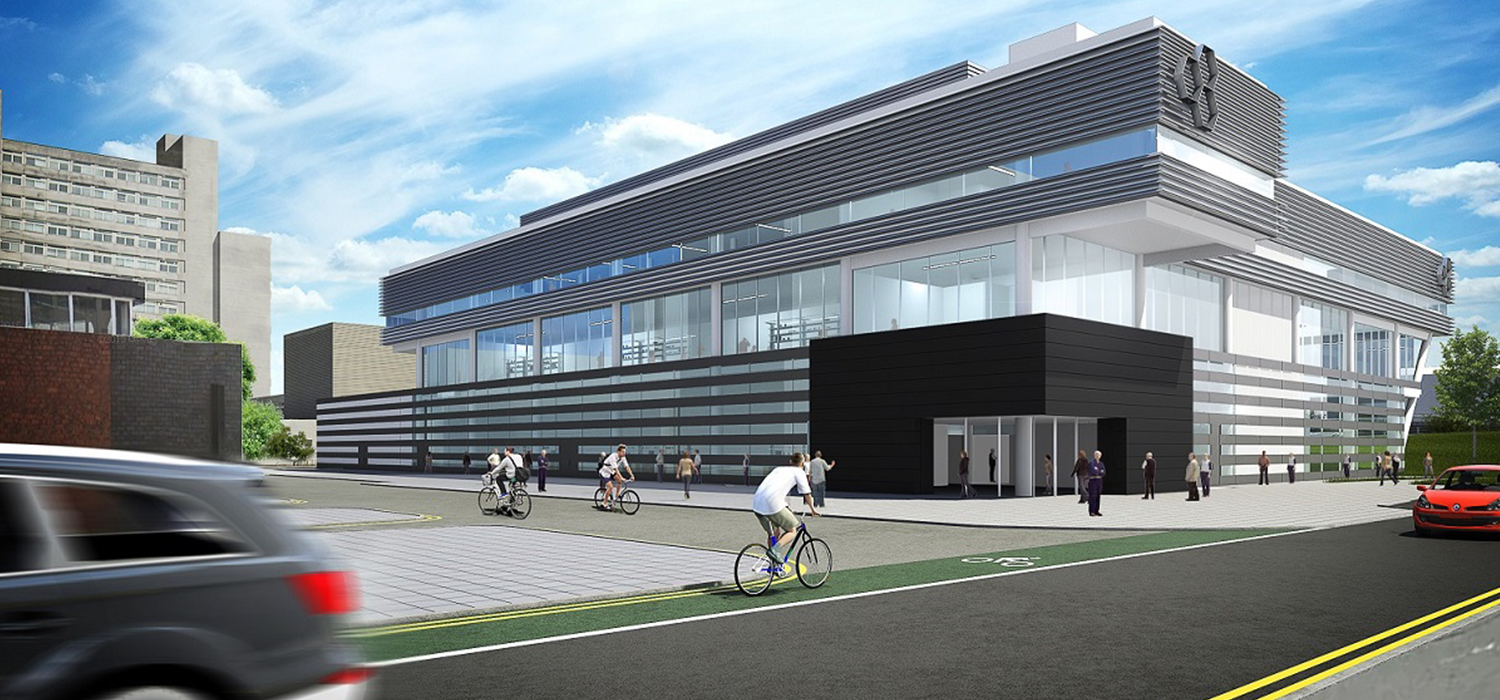Table of Contents
The challenge
The University of Manchester's ambition to commercialize the discovery of graphene called for new state-of-the-art facilities.
3
Graphene. Stronger than steel, but one million times thinner than a human hair. It could potentially make sea water drinkable and batteries so tiny they could be sewn into skin, revolutionizing everything from transport, engineering and electronics to medical science. The University of Manchester is at the heart of these new developments, pioneering research into how graphene and other advanced materials can change the world. However, if it is to continue leading the race to commercialize graphene, the University needs new state-of-the-art facilities to house its growing research and innovation base.
The solution
Working with the University since 2012, Arcadis has led the delivery of three multi-million, award-winning buildings that truly reflect the University’s ambition.
1
Arcadis has a long-standing relationship with the University of Manchester, having first worked with the team in 2012 to create the technical design brief for the world-leading National Graphene Institute. This £61 million, state-of-the-art facility opened in 2015 and is now the world's most advanced building for graphene research. Our role as Project Manager and Full Design Team saw us working closely with the University and leading scientists to bring their vision of a cutting-edge facility to life.
-
READ MORE
We were able to keep the project on budget and delivered to specific timeframes, providing early warning that allowed the University to apply for significant gap funding. We also identified and proposed space efficiencies for the building, helping to maximise flexibility in terms of how it could be used.
The resulting 7,825 sq m, five-storey building is now home to the latest technology. It has been designed using pioneering techniques to incorporate ultra-high specifications, including 1,500 sq m of cleanrooms, which have an atmosphere more than a million times purer than air.

The National Graphene Institute
In 2018, the National Graphene Institute was followed by the opening of the Graphene Engineering Innovation Centre (GEIC). This £60 million facility will provide a link into existing national expertise, offering a base for organisations and industry to work together on pilot production and accelerated research into the application of graphene.
Having already set the bar with the National Graphene Institute, Arcadis was once again appointed to provide Project Management and Full Design Team Services for the GEIC, including Cost and Information Management. Our appointment of Rafael Vinoly as the architect for the scheme was pivotal; resulting in a striking design that allows the public to witness the development of advanced materials through a highly glazed façade that showcases the research work being carried out within.
The standardisation and flexibility of the space has resulted in a truly adaptable facility, comprising more than 8,400 square meters of new laboratories, a testing hall, offices and new collaboration spaces. Our role – reviewing procurement, minimizing risk and overseeing the tendering process – meant that the new facility could be delivered against a demanding project timetable. We used BIM techniques to increase the speed of modelling, development of options and identification of the preferred design; all of which significantly sped-up the decision making process.

The Graphene Engineering Innovation Centre
The new trifecta of buildings was completed with the Henry Royce Institute, which opened its doors in 2020 to provide a hub for world-class research. Here, scientists, industry and the public can come together to accelerate the innovation and adoption of advanced materials to meet our ever-evolving global challenges.
At 46 metres high, the Henry Royce Institute is the tallest building on the university campus, and is home to world-leading materials scientists, state-of-the-art equipment and collaborative space for industrial engagement.
In our role as project manager, cost manager and Full Design Team, we worked with architects NBBJ, contractor Laing O’Rourke, structural engineer Ramboll and building services engineer ARUP to lead the delivery of this new £200 facility. We had to work as a unified team to overcome some of the logistical challenges associated with the project. A busy city centre location meant limited space and strict operating times, but techniques including offsite construction and advanced digital engineering came to the fore, ensuring seamless, timely and cohesive project delivery.

The Henry Royce Institute
The impact
Together, the National Graphene Institute, GEIC and Henry Royce Institute will form a new ‘Graphene City’, providing new jobs, skills and a competitive edge.
Together, the National Graphene Institute, GEIC and Henry Royce Institute will form a new ‘Graphene City’. Home to more than 350 scientists, manufacturers, engineers and innovators, the buildings will provide the critical mass necessary to drive forward innovation, research and development in graphene and advanced materials.
As a flagship project in the Government’s Northern Powerhouse agenda, Graphene City will not only enhance industrial competitiveness, it will cement Manchester and the UK as a world leader in advanced materials research. With it, new skills, new jobs, a boost to the local economy, and innovations that will surely deliver on a mission to shape more sustainable societies.
Not done reading?
This also might be interesting for you
- Related Insights





